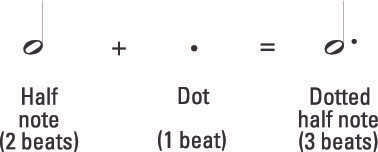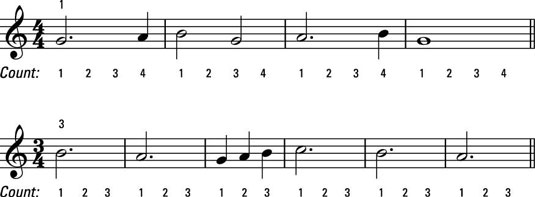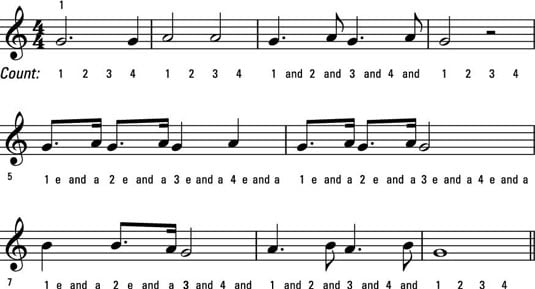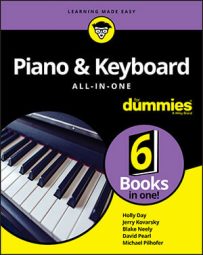One way to extend the length of a note when playing the piano or keyboard, and make it look a little fancier, is through the use of a dot. A dot on any size note or rest makes that note or rest last 50 percent longer.
Dotted half notes
A quarter note lasts one beat, a half note lasts two, and a whole note lasts four. You can see that you’re in need of a note that lasts three beats. Probably the most common dotted note in music is the dotted half note, which gets a total of three beats.

This note gets a lot of use in 4/4. In 3/4 time, it takes up the entire measure. Check out these dotted half notes in action and how to count them.

Dotted quarter notes
When you add a dot to a quarter note, you get a great hybrid note that lasts for one and a half beats. Because of its length, the dotted quarter note is commonly paired with an eighth note in order to finish out the second beat.

Dotted eighth notes
The dotted eighth note equals one and a half eighth notes, or three sixteenth notes. It takes four sixteenth notes to make one quarter note (or one beat). So, a dotted eighth note is often paired with a sixteenth note to make a full quarter note beat. In this combination, the normal eighth note beam connects the two notes, and the sixteenth note gets a shortened second beam.
Get some practice reading and playing some dotted notes in Book II, Chapter 5, Audio Track 19. Work on developing the kind of flexible counting system. You count only quarter notes in the first measure, then count out eighth and sixteenth notes for the measures that require that type of breakdown. When you’re out of the rough in the last measure, you can go back to counting quarter notes. Just make sure you keep the beat steady!

“Swanee River” is a classic example of both dotted quarter notes and dotted eighth notes. Listen to it until you get the feel of the rhythm.

